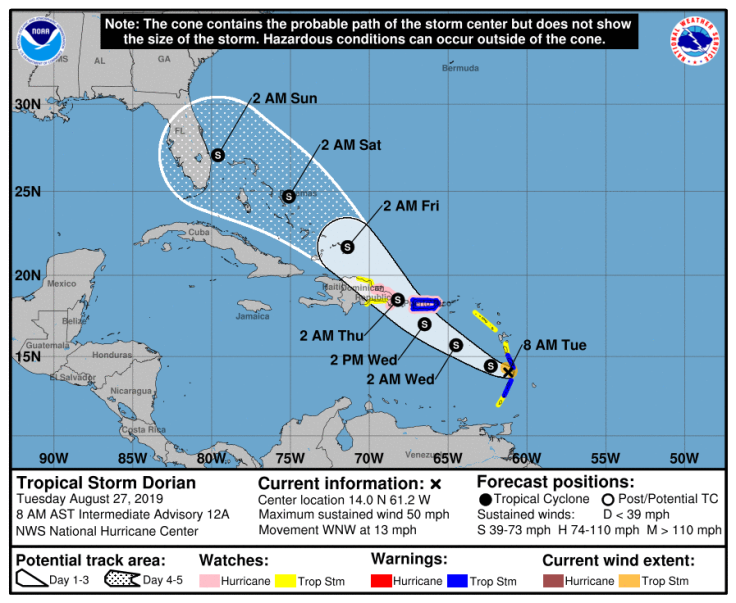
The premature end to a weather pattern that suppresses the formation of hurricanes has prompted the nation's top weather agency
to dramatically boost the chances of major, deadly storms during the rest of the 2019 Atlantic hurricane season.
The National Oceanic and Atmospheric Administration says it now expects 10 to 17 tropical storms, an increase from its May prediction of nine to 15 (wind speeds of 39 mph or higher), and five to nine hurricanes (74 mph or higher winds) with two to four becoming major storms (111 mph or higher winds) by the end of October.
Tropical storm conditions are expected and hurricane conditions are possible in Puerto Rico on Wednesday, where a tropical storm warning and hurricane watch have been issued. Rainfall of 2 to 4 inches with maximum totals of 6 inches are possible across Puerto Rico and St. Croix. https://t.co/7toSp3yM1Q pic.twitter.com/IlCgMxYSqL
— National Weather Service (@NWS) August 27, 2019
Despite the gloomy forecast from the NOAA, Mississippi-based C Spire says it is ready, thanks to bolstered network resources and staff,
to rapidly respond to emergencies and widespread natural disasters if they occur during the height of the hurricane season.
The telecom and technology services firm reinforces its extensive wireless and wireline networks and prepares its workforce for a wide range of potential disasters, including major weather events such as hurricanes. The company routinely reviews and updates its emergency and crisis communications plans and conducts year-round drills.
"
Our preparations are designed to give customers maximum reliability for all of their communications at the time of greatest need," said Mark Rigney, Senior Vice President of Core Networks for C Spire. "When disaster strikes, people depend on telecommunications as a lifeline to the outside world.
We are committed to providing our customers with the best network coverage possible in every situation."
NOAA forecasters said the main reason for the increased risk was an earlier-than-expected end to El Nino, a weather pattern that happens when Pacific Ocean water temperatures remain above normal for a long period, pushing strong winds from west to east and affecting weather patterns across the U.S.
When NOAA researchers made their initial prediction in May, they thought the El Nino pattern would continue through the peak of the Atlantic hurricane season, which runs from mid-August to late October. Historically, these peak months produce 95 percent of the season's hurricanes.
"This
updated outlook is a stark reminder that we need to be prepared," Rigney said. "It only takes one disaster to change lives forever. While weather professionals continue to improve the accuracy of their hurricane forecasts, individuals, businesses and communities must prepare now for response and recovery from severe weather events."
2019 has proven to be an unprecedented year for severe weather with record rainfall, historic backwater flooding in the Mississippi Delta and an alarming number of tornadoes. The Atlantic hurricane season, which began on June 1,
has produced two named storms, including Hurricane Barry, which made landfall in Louisiana last month.
2018
was considered an above average season with 15 named storms and eight hurricanes, two of which
were considered major, including Florence, which dropped nearly 36 inches of rain on North Carolina, and Michael, whose 155-mile-per-hour winds battered the Florida panhandle and produced 39 fatalities and $16 billion in damages.
"Last
year was an active season with two major hurricanes making landfall on U.S. soil," Rigney said. "With nearly 38 million people living in hurricane-prone coastal areas, now is the time for individuals, families and businesses to prepare their emergency plans, create emergency supply kits and learn evacuation routes."
© 2025 Latin Times. All rights reserved. Do not reproduce without permission.





